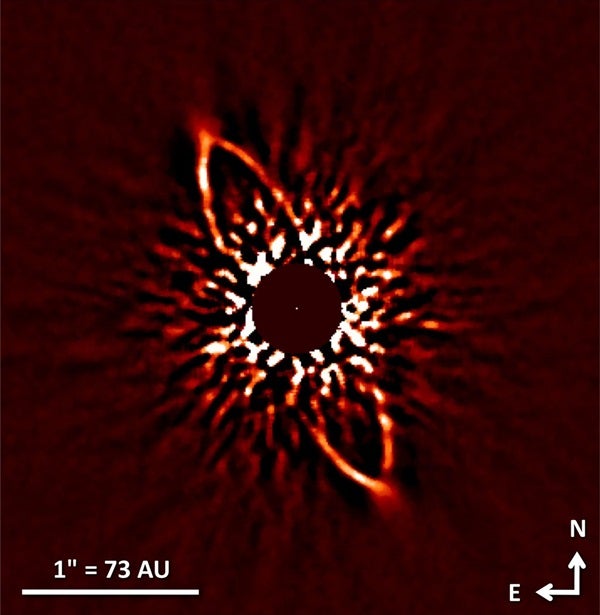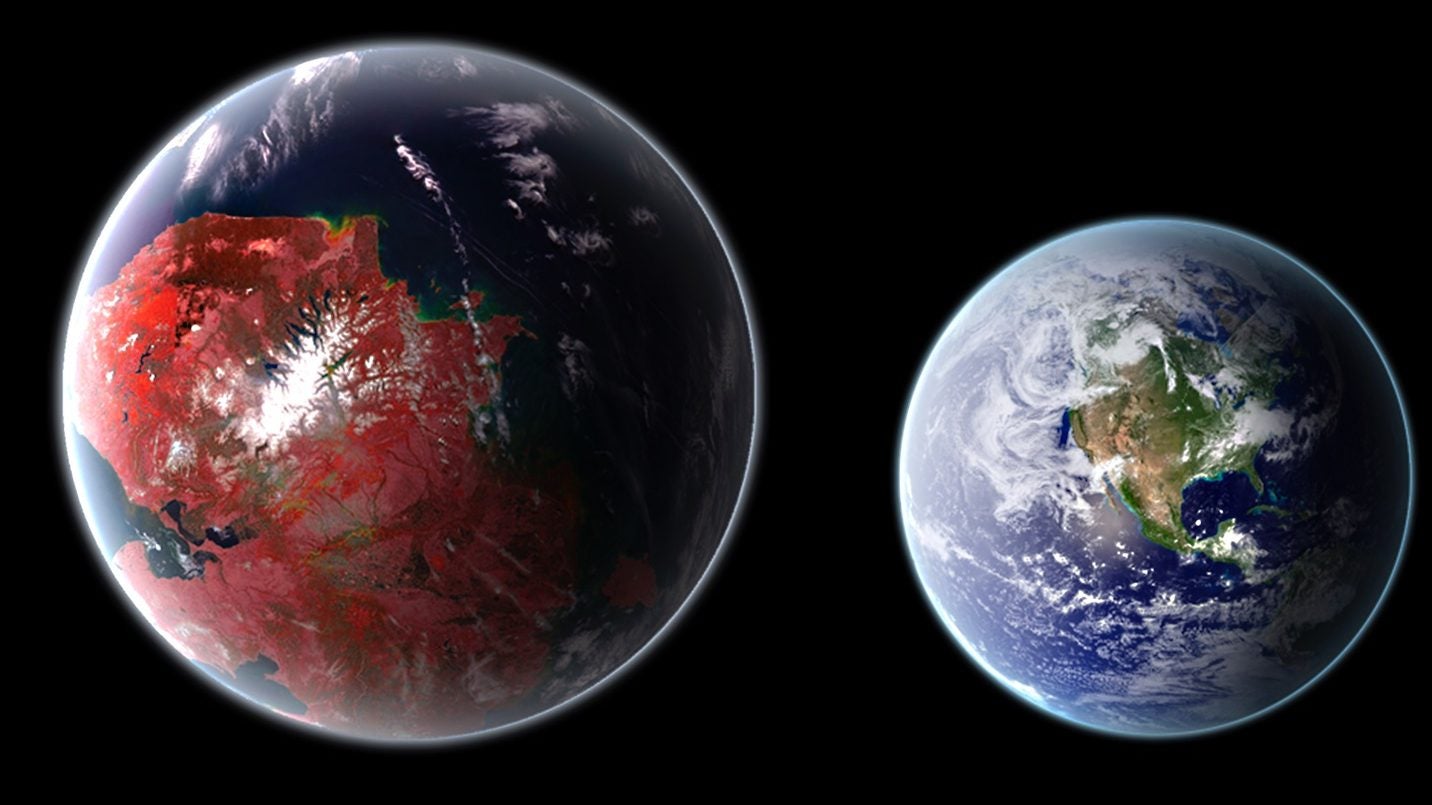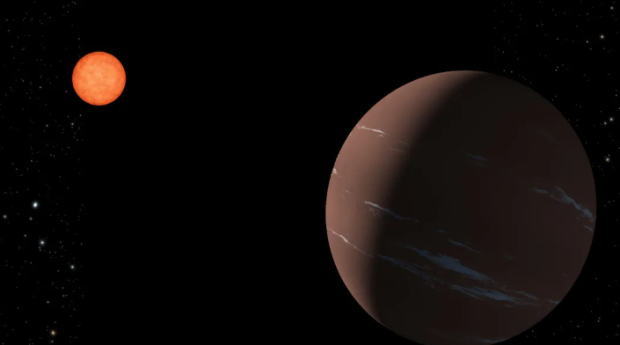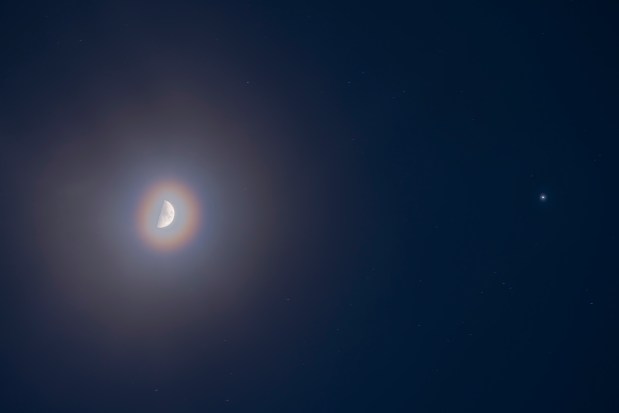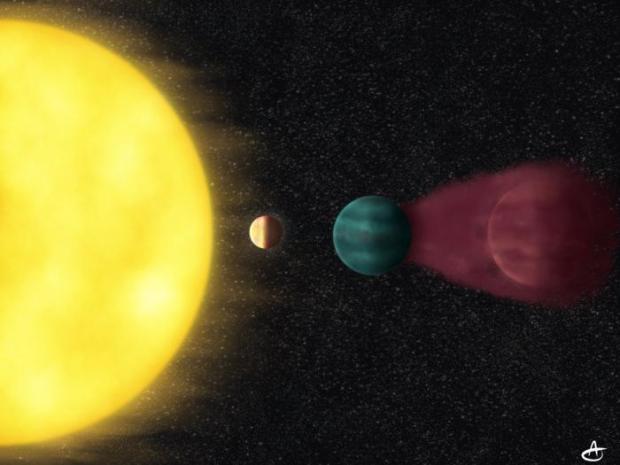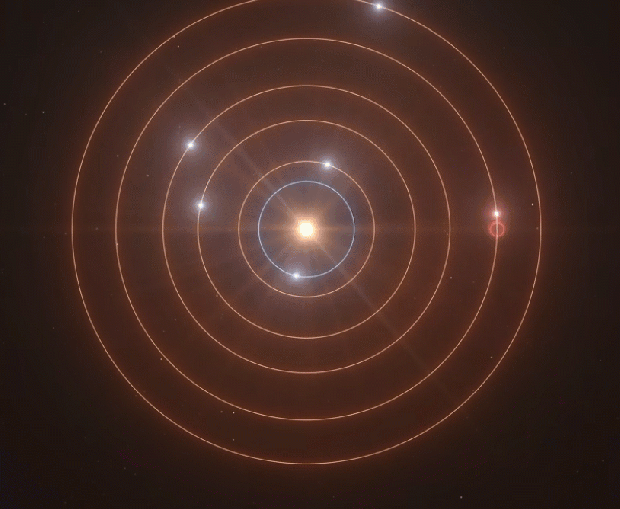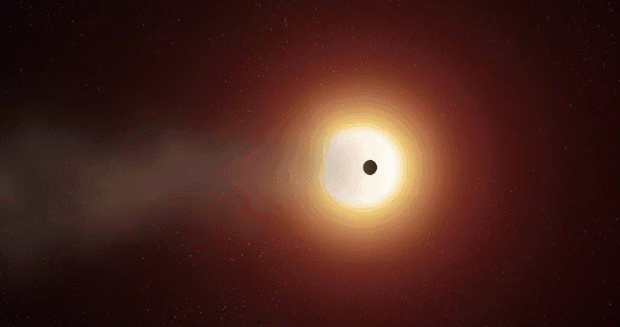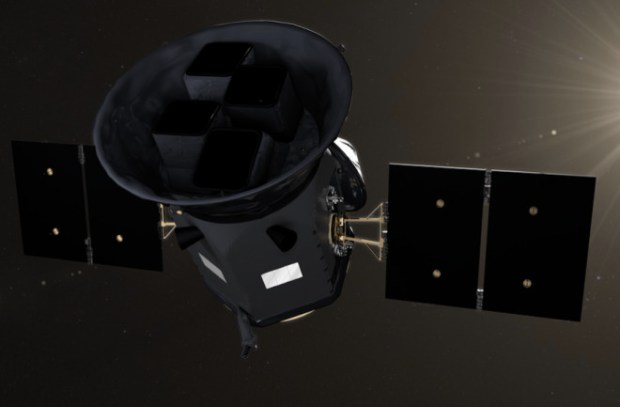What caused the wheel of dust around HR 4796 A to run off its axis? The most plausible explanation is that the gravitational force of one or more planets orbiting in the gap within the ring must be tugging at the dust grains, thus unbalancing their course around the star in predictable ways. Computer simulations have already shown that such gravitational tides can shape a dust ring into eccentricity, and findings from another — the eccentric dust ring around the star Fomalhaut — may be observational evidence for the process. Since no planet candidates have been spotted near HR 4796 A yet, the planets causing the dust ring to wobble are probably simply too faint to detect with current instruments. Nevertheless, the Subaru image allows scientists to infer their presence from their influence on the circumstellar dust.
The Subaru Telescope’s near-infrared image is as sharp as the Hubble Space Telescope’s visible-light image, thus enabling accurate measurements of its eccentricity. While the Subaru Telescope’s mirror is much larger than Hubble’s, light from the HR 4796 A system must first pass through the turbulent layers of Earth’s atmosphere before Subaru’s instruments can measure it. Subaru’s adaptive optics system allows it to correct for most of the atmosphere’s blurring effects in order to take razor-sharp images. The application of an advanced image processing technique, angular differential imaging, to the data suppressed the star’s bright glare and enhanced the faint light reflected from the ring so that it was more visible.
This image gives scientists more information about the relationship between a circumstellar disk and planet formation. Planets are believed to form in the disks of gas and dust that remain around young stars as the byproducts of star formation. As the material is swept up by the newborn planets or blown out of the system by the star’s radiation, such primordial disks soon disappear in a few tens of million years. Nevertheless, some stars are surrounded by debris or a secondary disk, which is mainly composed of dust long after the primordial disk should have dispersed. Collisions between small solid bodies — planetesimals — left over from planet formation may continuously replenish the dust in these disks. The dust ring around HR 4796 A is such a debris disk and provides essential information for studying planet formation and possible formed planets in such debris disk systems.

